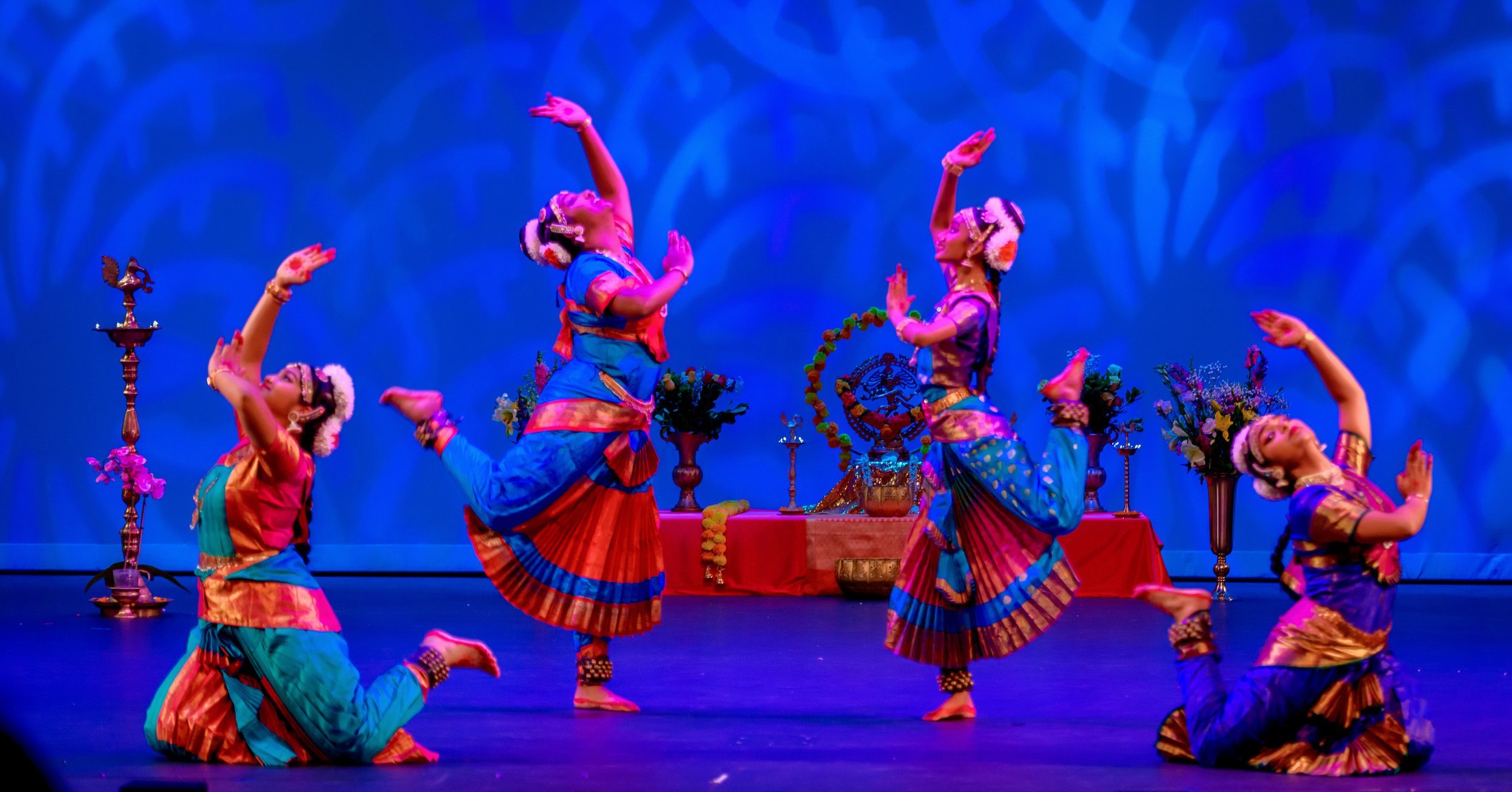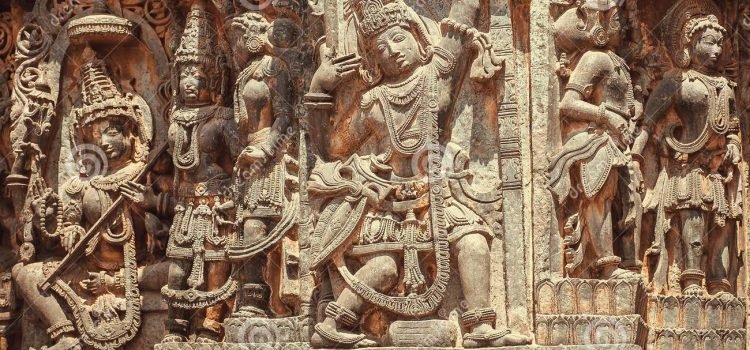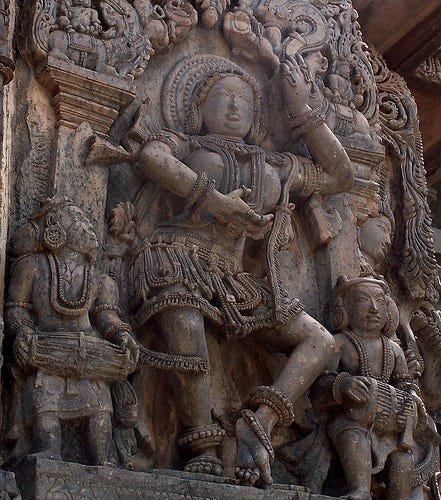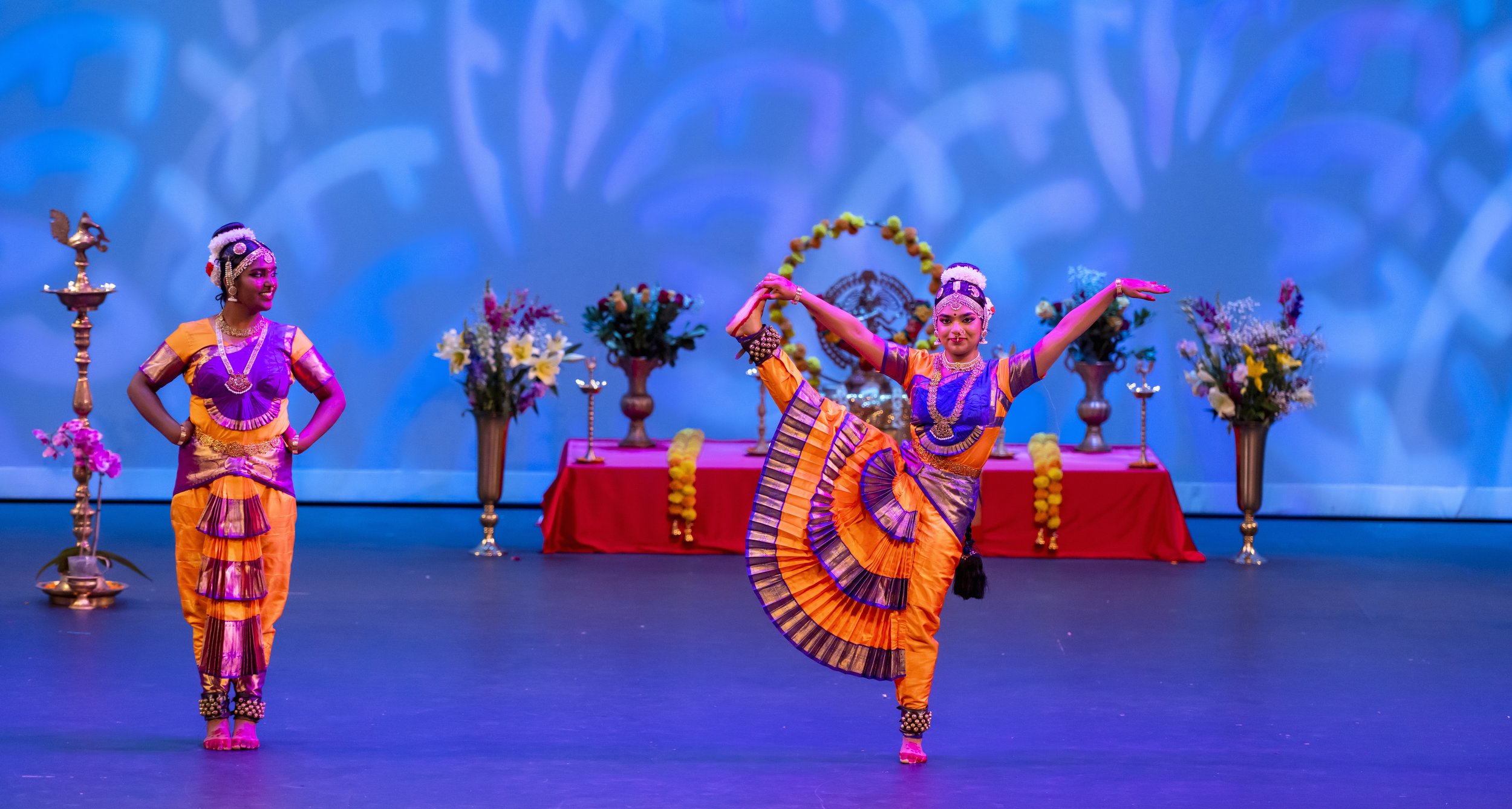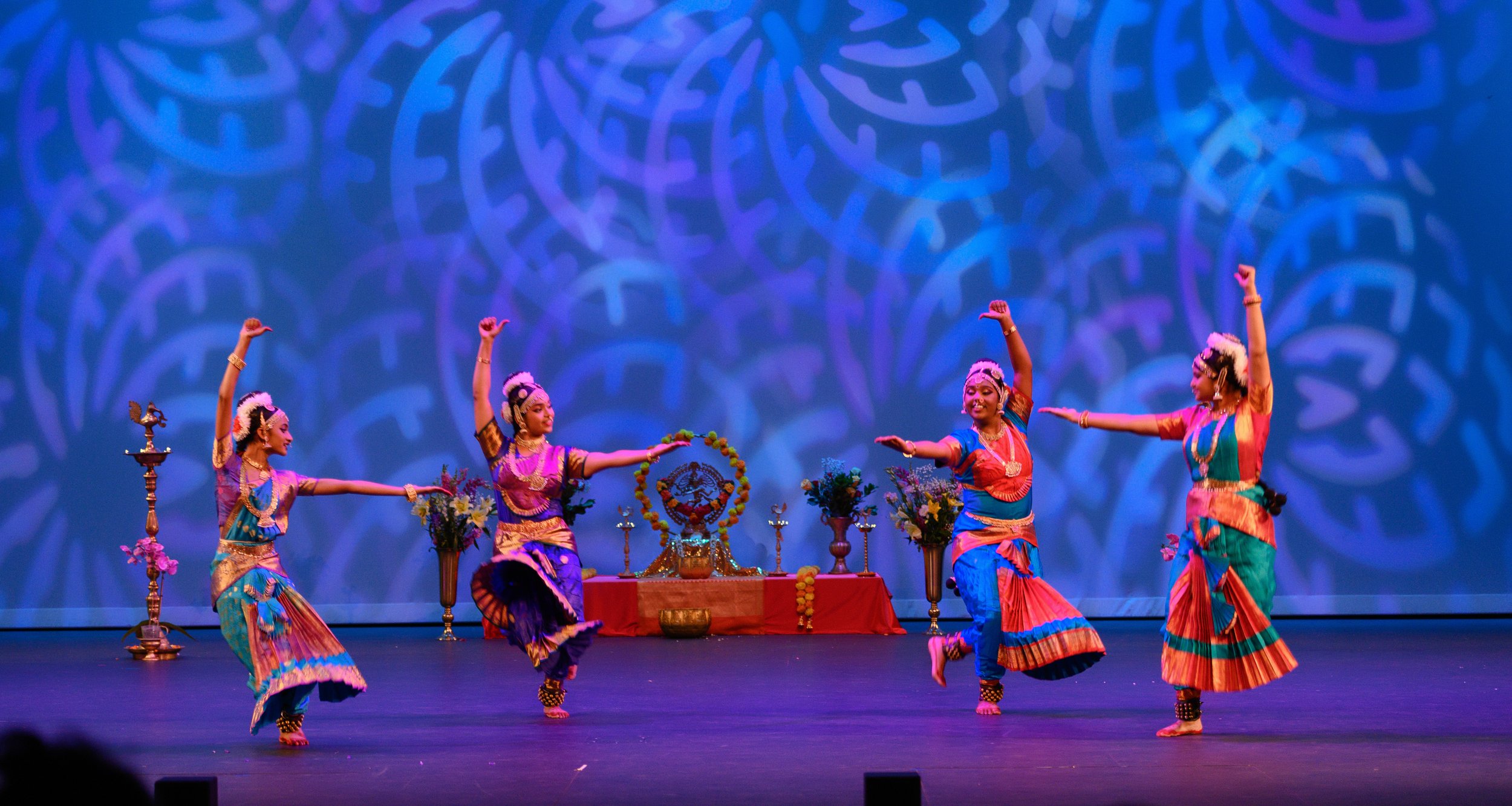Bharatha Natyam
Bharatha Natyam is one of 9 official Classical Dance forms of India. There are many different styles of Bharatha Natyam, the same way languages have different dialects. The style taught at Savithri Arts is a blend of Thanjavur & Pandanallur. Our Guru, Dr. Sinduri, was trained by the esteemed Guru, Late Sri Pakkiriswamy Pillai.
The origins of Bharatha Natyam are ancient, tracing back to over 2000 years ago in Tamil Nadu, India. It is said that Lord Shiva himself came down to Earth to pass on the knowledge of Bharatha Natyam to the great sage, Bharatha Muni. Consequently, he wrote a text known as the "Natya Shastra," which is the theoretical basis of the form. The Natya Shastra contains precise guidelines on the poses, expressions, steps, methods of acting and storytelling, and all other key aspects of Bharatha Natyam.
The name "Bharatha Natyam" comes from joining the words "Natyam," which means "dance," and "Bharatha," which comes from two places. The first is, of course, an ode to the Sage Bharatha Muni, as he brought this knowledge to the general public. The second origin of the word is a combination of 3 base syllables, "bha," "ra," and "tha." "Bha" is short for "Bhavam," which refers to the facial expressions used to convey emotions and stories within this dance. "Ra" is short for "Raagam," a feature of Carnatic (Indian Classical) Music that delineates melodic frameworks, similar to scales or modes in Western Music. "Tha" is short for "Thaalam," another feature of Carnatic Music that is focused on rhythm. These three features are key to Bharatha Natyam, and such is depicted in the name.
Bharatha Natyam has 3 main focuses, “Natya,” “Nritya,” and “Nritta.” These terms refer to the different aspects of dance, such as pure footwork and movements, versus facial expressions and emotions, known as “abhinaya.” During their journey in Bharatha Natyam, students of SAA will learn about the nuances of all three of these aspects. They will also learn an entire “margam,” or syllabus, starting with basic steps teaching the fundamentals, and culminating in the “Arangetram.” “Arangetram” literally means to ascend the stage, and traditionally is a dancer’s debut performance to the public. At SAA, students are given many opportunities to perform on stage from the moment they enter the academy. Our philosophy is that students will gain experience, gain confidence, learn how to deal with stage fright and high stress situations, and of course, have fun, by doing live stage performances. Then by the time they reach the Arangetram level, the idea of performing will not phase them at all.
During their journey in Bharatha Natyam, students of SAA will go through an entire margam (syllabus), starting with learning the most basic steps and culminating in the Arangetram. The items generally included in a margam are: (1) Pushpanjali - welcoming the audience and offering flowers to God to inaugurate the event, (2) Ganesha Kavuthuvam - a dance invoking Lord Ganesha to bless the dancer, (3) Alaripu - a very technical dance, focused on perfecting the posture and honing the dancer’s agility, (4) Jathiswaram - a dance combining the rhythmic cadences of the “jathi” and the melodic compositions of a “swaram,” (5) Padam - a longer and more technically advanced piece, traditionally about Lord Shiva, (6) Varnam - the showstopper of any arangetram, ranging from 25-35 minutes and depicting various stories from religious mythology, (7) Thillana - named for the type of carnatic song, each written in a different Ragam. Aside from these key items, students will learn other Bharatha Natyam pieces, folk variety pieces such as the Snake dance or Peacock dance, and more. At SAA, our Guru Dr. Sinduri uses her own creativity to customize many pieces based on the religious beliefs of each respective student, having created Varnams and other items on non-Hindu Gods such as Jesus and Mahavir.
Through this syllabus and over many years, students will learn the proper forms for each hand movement, each sequence of footwork, each facial expression, and more. Using these skills, they will learn to carry on the tradition of storytelling through dance.

